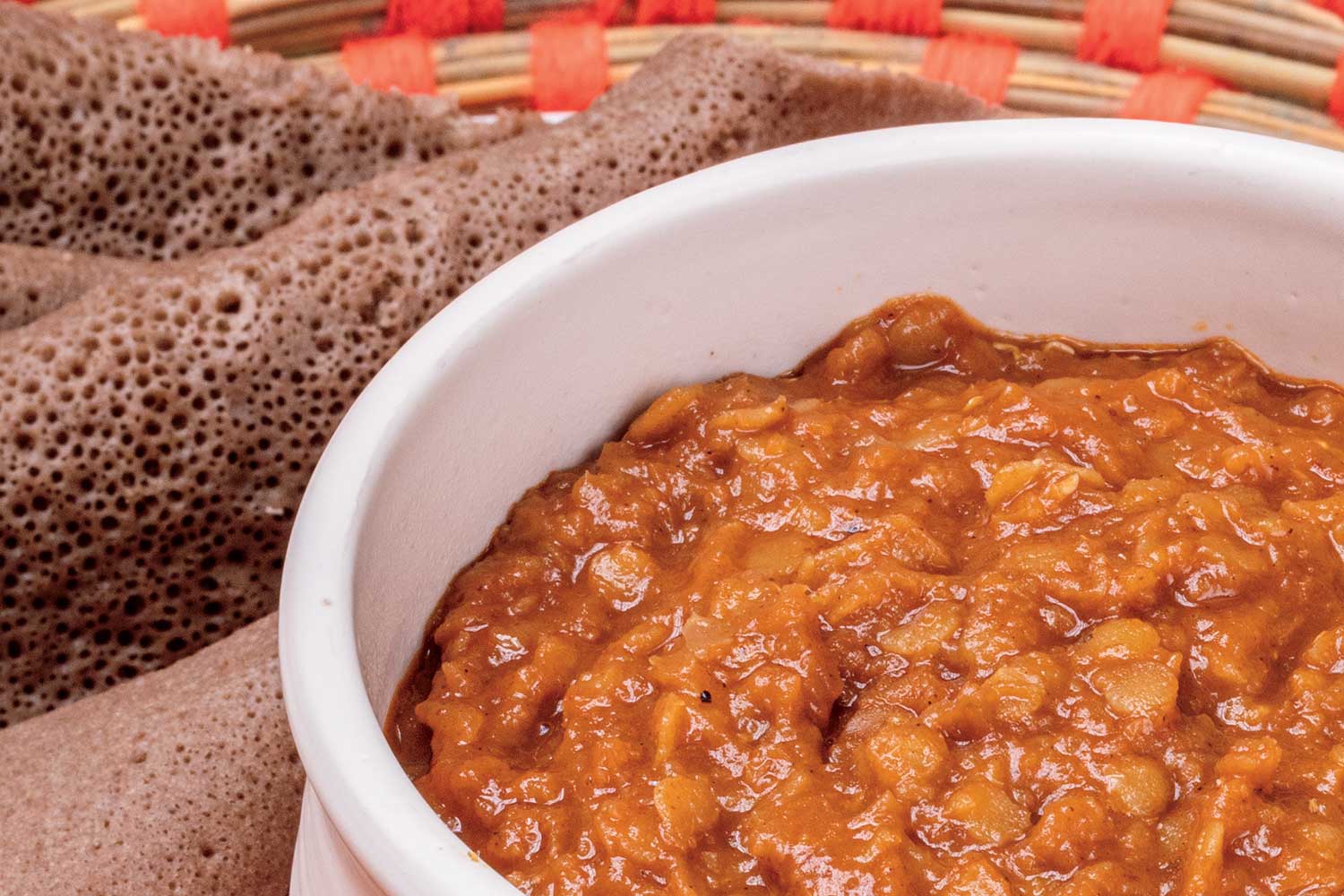This story is part of On Repeat, a recurring feature in which we ask top chefs, cookbook authors, and other famous foodies about the dishes they just can’t quit.
Beejhy Barhany was born in Ethiopia, raised in Israel, and lives in New York, where her Harlem restaurant, Tsion Café, serves up a vegan menu that highlights the cuisines of her diverse background. When asked to share a dish she makes On Repeat, Barhany pointed to messer wot, a hearty red lentil stew featured in her upcoming cookbook, Gursha, with biblical significance.
In Genesis, it’s a pot of this delectable stew that Jacob is simmering when his twin, Esau, returns home hungry. “It probably had some cardamom in there, and cumin, and maybe even some berbere, the Ethiopian spice blend,” Barhany says. “Esau couldn’t resist. He wanted it so much that he gave his birthright to Jacob for it.”
Why I love it
“It is convenient, easy, fast, and very versatile. You can use it as a spread, and it’s ideal as a dip with injera, or injera chips. It can replace your hummus or guacamole. It’s very hearty, well seasoned, and spiced. So that is always my go-to. And it’s packed with protein and nutrients. I feel very much connected to my Jewish-Ethiopian-Black heritage by shining light on this unique dish.”
What I’ve changed
“It really depends on my mood and who I’m making it for. Sometimes for those people who don’t want it that spicy I’d add more tomato paste. I would say of course you can make it more spicy or more mild; [you can adjust] the amount of berbere spice. It just depends who’s the audience.
“You could use other lentils. We do it with the red, they could be split or not split, it doesn’t really matter. This particular [red] one, it has a very specific meaning for me. It’s ancient Hebraic food, so I hold on tight to that. This [recipe] is particularly from Ethiopia.”
What else I’m into right now
Saving the stems. A lot of people, whenever they cook their collard greens, they will discard the stems. Usually people cut around it and throw it away. Me? I love it. I keep it whenever I’m cooking my collard greens to add crunch and a little texture and a little bit more like a “meaty” aspect.
Small-batch cooking. One thing I do here at the restaurant, as a restaurant owner, I always cook in small batches, so I will never really throw away food. I try not to waste anything. Once the batch is finished, I start a new batch.
Chipping away at waste. The other thing I do is with the injera. I never throw it away. Let’s say I made it two days ago. What would I do with it if it’s getting a little stale? I will make injera chips with it. You don’t waste it, because it takes a while to make it, you know? I couldn’t.

